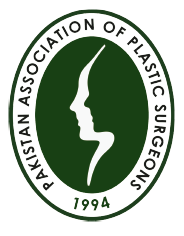CRANIOFACIAL DEFECTS
CONGENITAL CRANIOFACIAL DEFECTS:
Congenital craniofacial defects have a wide range of birth defects involving face and skull/head.
Common cleft lip and palate: separation I tissues of lip and palate.
Craniofacial clefts: separation in the soft tissue and bones of face and head leading to variety of defects.
Hemifacial microsomia: under development of structures of face on one side
Mobius syndrome: weakness of paralysis of multiple cranial nerves.
Craniosynostosis: premature closure of skull sutures (at junctions of bones) leading to a variety of head deformities. These may present isolated head shape problem or may be associated with syndrome (group of by birth problems making it complex problem)
Belpherophimosis: underdeveloped eye structures leading to inability to completely open the eyes, and both eyes looking widely apart than normal.
Vascular malformation: abnormal development of blood vessels ca present as birth mark to wide range of deformities.
Hemangioma: tumors of blood vessels
Congenital craniofacial defects can present with apparent defects only or can present with functional problems like eating, breathing, hearing and vision problems. They are dealt with by a team of experts like Plastic surgeon, neurosurgeon, ENT specialist, maxillofacial surgeon, anesthetist, nutritionist, child specialist, experts of genetics.
These children require good initial management to avoid complications. Many craniofacial defects are associated with heart, kidney, brain, and spine and some life-threatening breathing problems which need to be treated first.
Most of these children are normal human beings except those in whom there is involvement of brain. These defects are surgically corrected by expert plastic surgeons after they are treated and stabilized by pediatrician and other required specialties.
FAQ
1) What is life expectancy in these defects?
If not associated with major involvement of brain, heart, kidneys etc have goof life expectancy.
2) Are children with these defects normal?
Those having no associated problem of brain are usually normal individuals.
3) Will child look normal after surgery
Appearance after surgery is acceptable in expert hands.
4) Is it necessary to do surgery on these defects?
Surgery is necessary to maintain the form and function of facial structures.
Written by: Dr. Fahmina
Copyrights: Pakistan association of Plastic Surgeons

